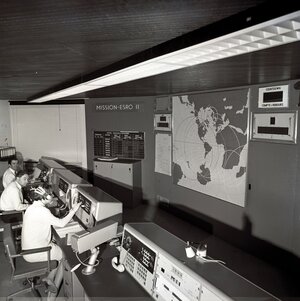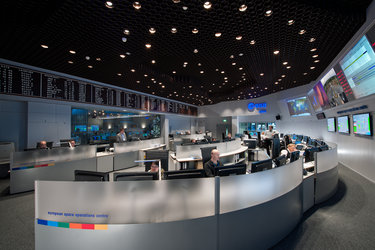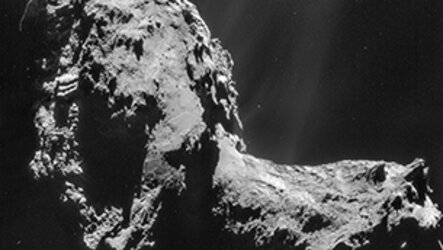Rosetta and Philae come to life in Darmstadt
ESA and the Hessisches Landesmuseum Darmstadt will bring the extraordinary mission of the Rosetta orbiter and the Philae lander to life in an exhibition running from 12 May to 8 October 2017. Europe’s comet chaser was guided on its journey through the depths of space by experts at ESA’s mission control centre in Darmstadt throughout the 12 year mission.
The Grand Hall of the museum will display models of both probes, the comet and the Ariane 5 rocket in a 480 sq m exhibition space. A multimedia ceiling projection will provide a vivid impression of the seven-billion-kilometre journey. Visitors will also be able to see spectacular meteorites and gain insight into the building blocks of our Solar System.
Meteorites from Mars and the Moon are two highlights of the exhibit, as well as a stony meteorite dubbed “Darmstadt”, which landed on the city some time before 1804, and the Unter-Mässing iron meteorite, which, at 80 kg, ranks as Germany’s largest preserved meteorite.
Most of the meteorites that fall to Earth originate from the asteroid belt between Mars and Jupiter, and thus from the region where Rosetta began its tracking of the comet.
Trailer for Rosetta: Europe’s comet chaser
Europe's comet chaser
The history of the mission is truly remarkable.
In March 2004, an Ariane 5 rocket launched the Rosetta probe into space with the objective of discovering more about the origins of our Solar System. Guided by teams at ESA’s European Space Operations Centre in Darmstadt, the Rosetta mothership looped past Earth and Mars before flying by the asteroids Šteins and Lutetia. In 2011, after seven years in flight, Rosetta was put into hibernation for 957 days to save energy. After awakening, the probe reached its final destination – the comet 67P/Churyumov–Gerasimenko – in August 2014.

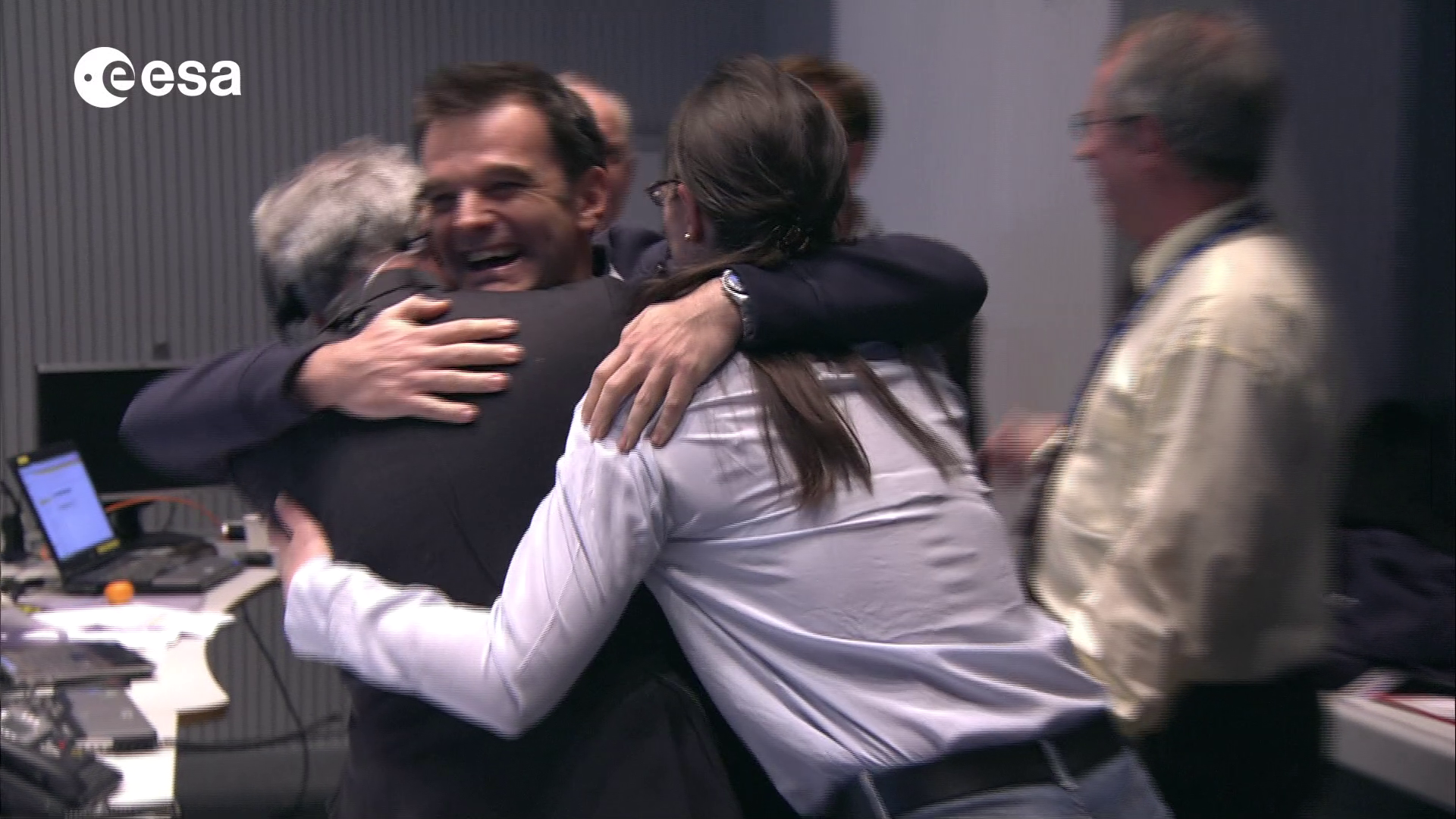
Access the video
After bouncing twice, the small Philae probe made a spectacular landing on the comet on 12 November 2014 after a seven-hour descent – an historic achievement. Controlled from the DLR German Aerospace Center in Cologne, Philae spent more than 60 hours measuring the comet’s rugged surface before going to sleep.
Seven months later, Philae woke up after receiving sufficient sunlight to recharge its batteries, but it stopped transmitting signals in July 2015. Just before the end of its mission, a camera on Rosetta found the small Philae lander on the comet, wedged in a dark crack of rock.
The Rosetta mothership followed the comet for almost two years on its orbit around the Sun. After flying a total distance of seven billion kilometres, the craft made a controlled crash landing onto the comet in September 2016.
This special exhibition will appeal to young and old visitors alike and the signs and display panels are written in both German and English. Combining cutting-edge European comet research with examples of meteorite finds, the exhibition gives a fascinating insight into the oldest raw materials known to humankind.
Rosetta: Europe's comet chaser
Hessisches Landesmuseum Darmstadt
12 May to 8 October 2017
Opening hours
Closed Mondays
Tuesday / Thursday / Friday 10:00– 8:00
Wednesday 10:00–0:00
Saturday / Sunday / public holidays 11:00–17:00
Hessisches Landesmuseum Darmstadt (HLMD)
Friedensplatz 1
64283 Darmstadt
Admission:
€10, reduced €6 (including museum)
Children and youth under 18 free
More about ESA Rosetta
#ESOC50
This year, the European Space Operations Centre is celebrating 50 years as ‘mission control’ in Darmstadt.
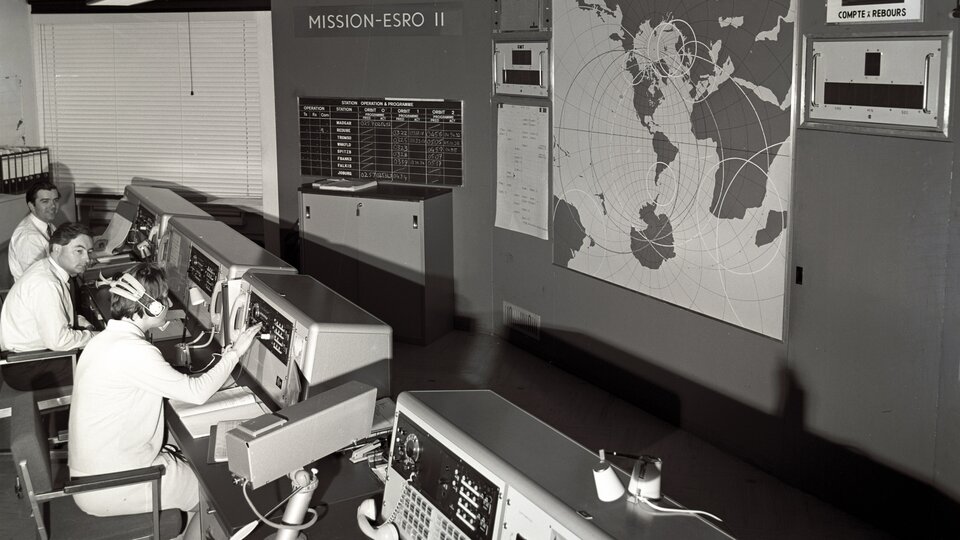
Since 1967, the European Space Operations Centre has overseen the smooth operation of European satellites and space probes operating near Earth, orbiting our Moon, watching our Sun or exploring deep in our solar system.
To date, the centre has controlled over 60 ESA missions, including Rosetta, Smart-1, ExoMars, XMM-Newton, Gaia, Envisat, CryoSat and the Sentinels. The control rooms, which are networked with ground stations throughout the world, track and monitor satellites throughout all phases of their missions, executing manoeuvres and controlling their operations.
Media contact
Yvonne Mielatz
Leiterin Presse- und Öffentlichkeitsarbeit
Hessisches Landesmuseum Darmstadt (HLMD)
Friedensplatz 1
64283 Darmstadt
Telefon: +49 (6151) 16-57 100
E-Mail: yvonne.mielatz@hlmd.de
Bernhard L. von Weyhe & colleagues
Corporate Communications Office
European Space Agency ESA/ESOC
Robert-Bosch-Strasse 5
64293 Darmstadt
Email: esoc.communication@esa.int
Tel.: +49-6151-902516



